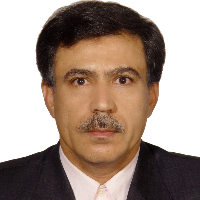Histopathologic Evaluation of Radio-Protective Effect of Hesperidin on the Liver of Sprague Dawely Rats
Hesperidin is a bioflavonoid glycoside mainly found in citrus fruit and has been shown radio-protective potential in various measurement systems.
In this article aims to investigate the radio-protective effect of hesperidin on the liver of Sprague Dawely rats.
In this clinical study, 40 male rats were selected randomly and divided into 8 groups. Group 1 did not receive radiation and hesperidin (sham control). Group 2 received only 100 mg/kg body weight (b.w) of hesperidin for 7 consecutive days (HES group); group 3 exposed to dose of 2Gy whole body gamma radiation (2Gy group), and group 4 and 5 received 50 and 100 mg/kg b.w of HES for 7 consecutive days before 2 Gy gamma radiation, respectively.Group 6 exposed to dose of 8Gy gamma radiation (8Gy group); group 7 and 8 received 50 and 100 mg/kg b.w of HES for 7 days before 8Gy gamma irradiation, respectively. Histopathological evaluation was perfomred 24 hours after radiation.
Administration of hesperidin (50 mg/kg b.w, 7 days) before 2Gy of gamma irradiation led to remove inflammatory mononuclear cells in the portal space. Microscopic findings in the groups receiving two doses of hesperidin (50 and 100 mg/kg b.w, orally, 7 days), before 8Gy of gamma radiation, were similar in a way that extreme dilation of central veins to be seen, however, there was no capillarization.
HES can be offered as a suitable radio-protector in radiotherapy patients and radiation workers.
-
Evaluating the Radioactive Waste Produced per Patient by Radiopharmaceutical Sources and Measuring the Radioactive Contamination of Surfaces and Staff at the Bushehr Nuclear Medicine Department
Zahra Mohamadi Baghmolaei, Reza Fardid, Masoud Haghani *, , Mohammad Abdolahi, Mohammad Ghaderian
Journal of Biomedical Physics & Engineering, May-Jun 2024 -
Investigating the Expression Levels of Bax and Bcl-2 Genes in Peripheral Blood Lymphocytes of Industrial Radiation Workers in the Asaluyeh Region
Omid Keshavarzi, , Reza Fardid, Masoud Haghani *, Tahereh Kalantari, Azadeh Namdari
Journal of Biomedical Physics & Engineering, May-Jun 2024



